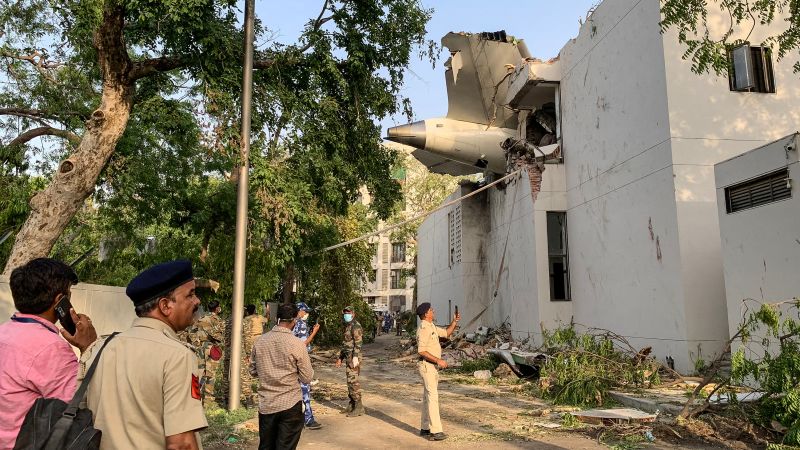Investigation Uncovers Key Findings in Ahmedabad Plane Crash












2025-07-12T20:00:00Z

CNN — A preliminary report on the horrific aviation disaster that occurred in Ahmedabad, India last month has provided crucial insights into the events leading up to the crash of Air India flight AI171. The accident, which tragically claimed the lives of all but one of the 242 people aboard and resulted in 19 fatalities on the ground, has left many questions unanswered despite shedding light on one significant aspect of the incident.
According to the findings from India’s Aircraft Accident Investigation Bureau (AAIB), the airline’s Boeing 787 Dreamliner lost critical fuel supply to both engines shortly after takeoff as it was ascending into the sky. The black box, or flight data recorder, revealed that the aircraft reached an airspeed of 180 knots before both engines’ fuel switches were abruptly transitioned from the RUN to CUTOFF position. This change occurred almost simultaneously, within a mere second of each other, effectively stopping the flow of fuel to the engines.
In a startling revelation, an audio recording from the black box captured a moment of confusion between the pilots. One pilot questioned the other about why the switches had been flipped; the co-pilot responded that he did not perform that action. The report, however, does not clarify which pilot made the inquiry or which was the one who allegedly switched off the fuel supply.
Seconds later, the pilots attempted to rectify the situation by flipping the switches back to restore the fuel supply, and while one engine was able to reignite, it was tragically too late to prevent the aircraft from plummeting to the ground.
While the AAIB’s report identifies the loss of fuel supply as the fundamental reason for the crash, it raises numerous additional questions about how such a dire situation could have occurred in the first place. Eyewitness accounts and the local community continue to grieve for the victims, including families that have been irrevocably altered by this disaster.
The investigation has also highlighted the design of the fuel switches on the Boeing 787 Dreamliners, which are located between the pilot seats and behind the throttle levers, shielded by a protective metal bar. The switches are built to require a deliberate two-step action to flip, making an accidental switch-off highly improbable. Geoffrey Dell, an aviation safety expert, commented on the mechanics of the switches, stating, “It’s at least a two-action process for each one.” The unusual circumstances leading to both switches being turned off simultaneously raise concerns about whether human error, a technical malfunction, or even a deliberate act played a role in the calamity.
Further complicating matters, a previous advisory issued by the U.S. Federal Aviation Administration in 2018 raised concerns about potential disengagement of the fuel control switch locking feature. Although considered a non-urgent issue, Air India had not conducted inspections based on this bulletin, a decision that may now be under scrutiny.
Former pilot Ehsan Khalid cautioned against hastily attributing blame to the flight crew, emphasizing that the report primarily confirms that both engines lost power, a fact the pilots were aware of at the time. He stated, “The AAIB report to me is only conclusive to say that the accident happened because both engines lost power.” He further insisted that the investigation should focus on the overall systemic factors that contributed to the tragedy rather than solely the actions of the pilots.
As the investigation unfolds, India’s Civil Aviation Minister, Ram Mohan Naidu, has urged the public not to jump to conclusions prematurely. A comprehensive report is expected in the coming months, but for now, Air India has confirmed that it is fully cooperating with authorities as they continue to delve into the factors that led to this devastating crash.
 Thomas Fischer
Thomas Fischer
Source of the news: CNN